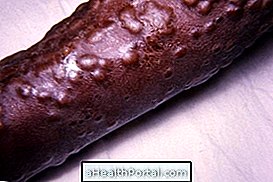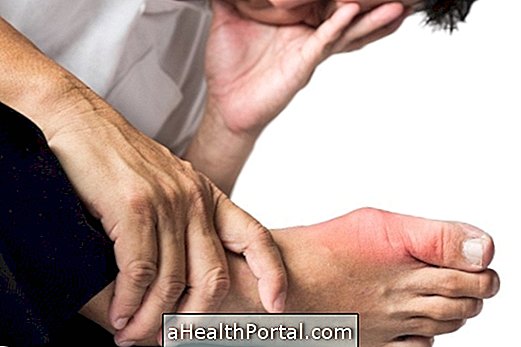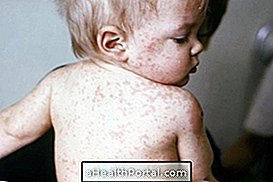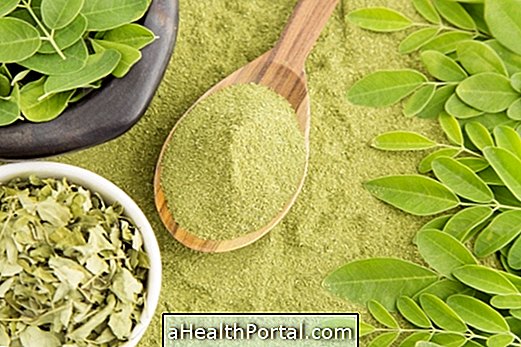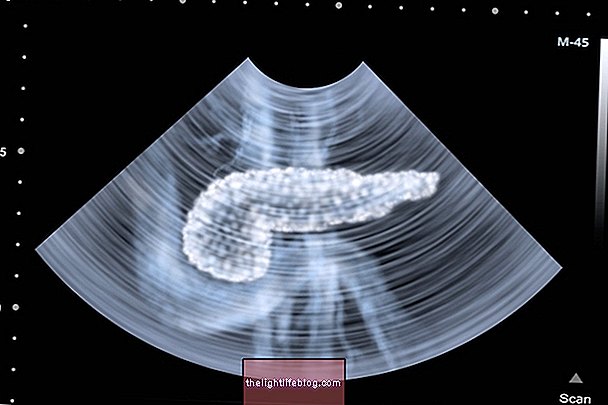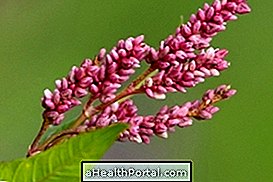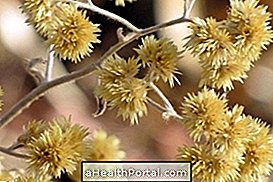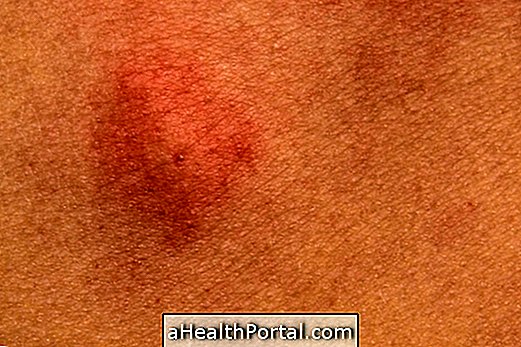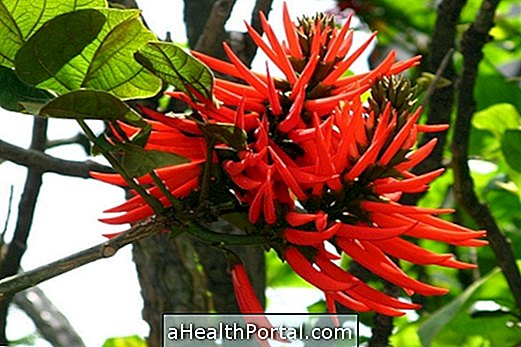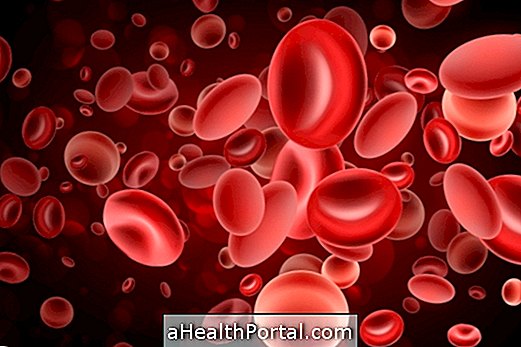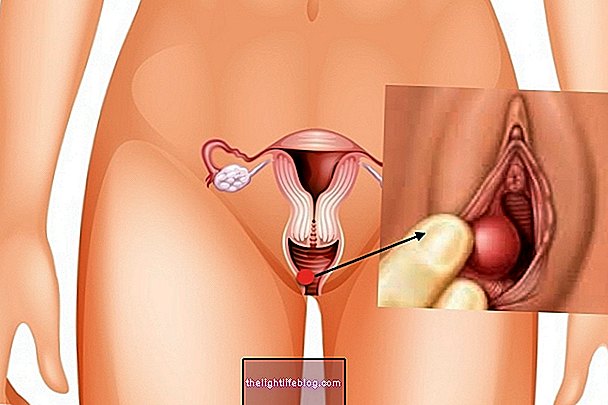Cold symptoms usually appear 1 to 3 days after infection with a common virus, such as rhinovirus, which is transmitted by inhaling droplets of nasal secretions suspended in the air containing the virus, which spread when an infected person sneezes, cough or blow your nose, for example.
The cold is more frequent in cold times of the year, since during this period it is common for people to stay longer in closed environments and with little air circulation, which favors the transmission of the virus.

The main symptoms of the common cold are:
- Runny nose with watery, transparent discharge;
- Nasal congestion;
- Catarrh with a greenish-yellow color;
- Sneezing;
- Sore throat;
- Cough;
- Body ache;
- Mild headache;
- Low fever;
- Feeling of general malaise.
These symptoms usually appear gradually and last for about 7 to 10 days, but they can last longer in people who smoke. However, if there is no improvement in symptoms or if the person has a fever greater than 38.5ºC, you should consult your doctor.
Difference between flu and cold
The main difference between the flu and the cold is the intensity of the symptoms, which in the flu are more intense and include high fever, which can last for a few days. In the case of the cold, the symptoms are more subtle and easier to treat. Better understand how to differentiate between flu and cold.
How to relieve symptoms
Cold symptoms can usually be easily treated at home, through a few simple measures such as:
1. Drink plenty of water
Keeping the body hydrated is essential to help fight the common cold virus, in addition to helping to fluidize nasal secretions and facilitate their elimination, improving the discomfort of a runny or stuffy nose. Therefore, you should drink plenty of water, at least 8 glasses a day, or juices, teas, soups or warm water with lemon.
In addition, it is important to avoid caffeinated drinks such as coffee or black tea, and alcoholic beverages, as they can cause dehydration.
2. Resting
Rest is important to help the immune system fight the virus, which allows the person to recover from the cold more quickly, and also helps to reduce the chances of transmitting the virus to other people.
In addition, it is advised not to go to work or school, and to rest at home if you have a fever, a strong cough or if you become drowsy.

3. Use a humidifier
Using a humidifier or vaporizer helps to increase air humidity and relieve nasal congestion and cough. Another simple way to increase the humidity of the environment is to place a bucket of water in the room or the room where the person with a cold is.
4. Gargle with warm water and salt
Gargling with warm water and salt helps to relieve the discomfort of sore throat and to clear the phlegm stuck in the throat. In addition, salt helps to kill bacteria that can infect the throat, acting as a natural antiseptic.
To gargle with warm water and salt, just add half a teaspoon of salt in half a glass of warm water, gargle for a few seconds and then spit out the water.
5. Wash your nose with serum
Washing your nose with saline helps to relieve nasal congestion, eliminating the secretions that make your nose stuffy and runny, as well as preventing the development of sinusitis. Another option is to use saline solutions that can help relieve symptoms, even in children, being advised in the case of babies to gently suck the secretion from the nostrils with a bulb syringe after applying the saline solution.
Watch the video with nurse Manuel Reis on how to wash your nose with serum:

How the treatment is done
Cold symptoms usually improve in a few days, without the need for any specific treatment with drugs.
However, your doctor may recommend treatment with medication to help relieve your cold symptoms and discomfort:
- Analgesics or anti-inflammatory drugs, such as paracetamol, dipyrone or ibuprofen, in cases of fever, sore throat, head or body;
- Nasal decongestant spray, to relieve nasal congestion, and can be used by adults for a maximum of 5 days;
- Expectorant syrup, such as ambroxol or guaifenesin, to facilitate the elimination of nasal secretions;
- Mucolytic syrup, such as acetylcysteine or bromhexine, to make nasal secretions more liquid, facilitating their elimination;
- Antihistamines, such as loratadine or desloratadine, to open the nasal passages and help relieve congestion and sneezing.
In addition, it is important to increase the body's defenses, as it is possible for the immune system to fight the virus more effectively. Thus, to strengthen immunity and treat the cold, it is recommended to increase the consumption of foods rich in vitamin C, such as orange, pineapple, strawberry and acerola, for example.
Watch the video with nutritionist Tatiana Zanin with food tips to boost immunity and help fight the cold:

When to go to the doctor
Although it is not necessary to go to the doctor to cure the common cold, it is advisable to consult a general practitioner for adults or pediatrician for children when you have:
- Fever higher than 38.5ºC or that lasts 5 days or more or that returns after a period without fever in adults;
- 38ºC fever in newborns up to 12 weeks;
- Fever that increases in intensity or lasts for more than two days in children of any age;
- Worsening of symptoms;
- Shortness of breathe;
- Panting;
- Strong sore throat;
- Earache;
- Headache;
- Pain in the sinuses.
In addition, children who experience extreme confusion, unusual drowsiness or lack of appetite need to be evaluated by the pediatrician to start the most appropriate treatment.
Was this information helpful?
Yes No
Your opinion is important! Write here how we can improve our text:
Any questions? Click here to be answered.
Email in which you want to receive a reply:
Check the confirmation email we sent you.
Your name:
Reason for visit:
--- Choose your reason --- DiseaseLive betterHelp another personGain knowledge
Are you a health professional?
NoMedicalPharmaceuticalsNurseNutritionistBiomedicalPhysiotherapistBeauticianOther
Bibliography
- HEIKKINEN, Terho; JARVINEN, Asko. The common cold. Lancet. 361. 9351; 51-59, 2003
- FASHNER, Julia; ERICSON, Kevin; WERNER, Sarah. Treatment of the common cold in children and adults. Am Fam Physician. 86. 2; 153-159, 2012
- HEMILA, Harri; CHALKER, Elizabeth. Vitamin C for preventing and treating the common cold. Cochrane Database Syst Rev. 1. CD000980, 2013
- ECCLES, Ron. Understanding the symptoms of the common cold and influenza. Lancet Infect Dis. 5. 11; 718-725, 2005
- MAYO CLINIC. Common cold. Available in: . Accessed on 19 Mar 2021
- NHS. Common cold. Available in: . Accessed on 19 Mar 2021


